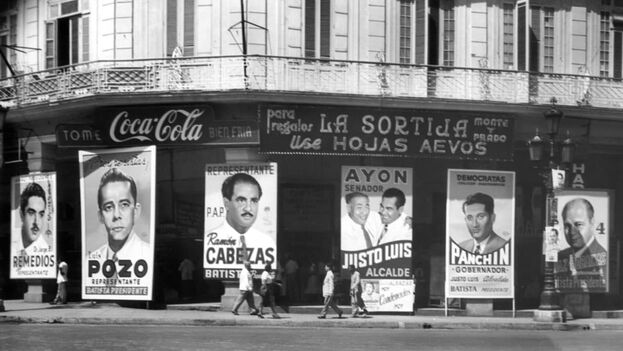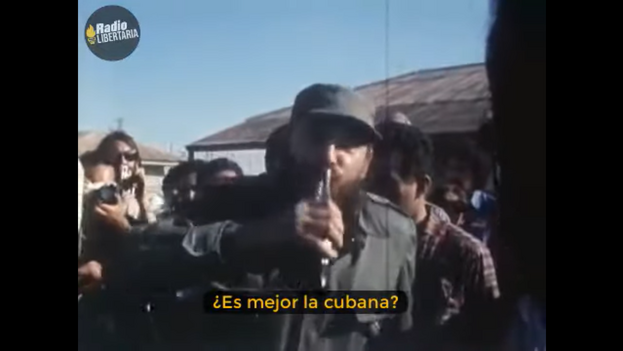
![]() 14ymedio, Madrid, August 7, 2021 — Believing in 2009 and 2016 that Fidel Castro’s declining health presaged the total collapse of the regime, officials at Coca Cola began preparing for a return to Cuba. The Mexican magazine Emeequis has recently published an article in which it reveals that the American company paid for several spots for a new product launch in Cuba which never occurred.
14ymedio, Madrid, August 7, 2021 — Believing in 2009 and 2016 that Fidel Castro’s declining health presaged the total collapse of the regime, officials at Coca Cola began preparing for a return to Cuba. The Mexican magazine Emeequis has recently published an article in which it reveals that the American company paid for several spots for a new product launch in Cuba which never occurred.
One of the members of the creative team which developed the ad campaigns confirmed that he had access to five of the ads — four from 2009, one from 2015 — that were canned after the company realized it would not be possible market its product in Cuba, which it had left in 1960 after its assets were expropriated.
The first campaign was created in 2009, a year after Fidel Castro had turned over power to his brother Raul. This was also after the 2008 financial crisis, when the company was looking for ways to appeal to consumers with an optimistic message. At the time, the company thought this would be their first opportunity but the arrival of Fidel’s designated successor quashed any hopes of a thaw.

The first campaign, however, was developed in Spain. Emeequis reports in detail that the ad, which went by the catch phrase “Uncover Your Happiness,” was shot in Havana. “In Cuba there is joy” and “in Cuba there is flavor” were among the phrases interspersed with images that faithfully illustrated Cuban clichés. The ad closed with the phrase “Hello, Cuba.”
The ad agency Ogilvy hired several producers to shoot the four videos. “Of course we brought in the truck. Permits were never a problem. Do you know why? Because we were providing jobs, we were spending money. Nothing was digital,” a Mexican creative told Emeequis, surprised at how easy it was to get permission to shoot at that time.
In another commercial, a voiceover says: “These are your roofs, this your sea, this your boardwalk. These are your cars, your bicycles, your sunrises and your nights, your city and your balconies. This is your street. These are your doors that are opening once again. And these are your people, your friends, who today are saying, ’Welcome!’”
But the welcome reception never happened. The world’s most popular sugary drink company dusted off the idea six years later when things were beginning to thaw. “In April 2015, a message from Ogilvy & Mathers appeared in the inbox of one of the agency’s partners. It read, “They have strongly emphasized that this material is highly confidential.”
At that time, a campaign was developed based on the plotline of the film “Cast Away” by Robert Zemeckis. In it, Tom Hanks ends up stranded on a desert island for years with little more than a punctured volleyball — he names it Wilson — with which he has imaginary conversations.
“The news is that Coca-Cola is returning to Cuba. I already know that,” says Hanks to Wilson, adding that the return took years but that it was going to be great.
“Initially, the idea was to open with Hanks throwing himself and his raft into the sea but it was discarded because it would have had been a reminder of people fleeing Cuba on rafts,” said the creative.
A spot was developed focused on a young audience, a potential market for the brand, with a tune that mixed two local musical styles: son and reggaeton. “I have a rhythm that I teach to my friends, that I dance under the sun on the Malecón … I put on some son, and a pretty girl, Coca-Cola refreshes the day.”
But that campaign also stayed in the drawer. The Atlanta-based company did not return to Cuba following Castro’s death and currently has no plans to do so, according to the Mexican publication.
The Cuban government expropriated Coca Cola’s assets in 1960. At the time the company had bottling plants in Havana, which opened in 1906, and Santiago de Cuba as well as distribution operations. It had been one of the main consumers of the island’s sugar.
As the Emeequis article points out, Che Guevara promoted a domestic version of the beverage but none of the prototypes were successful. As the author Gabriel García Márquez pointed out, when the guerrilla fighter tried one of the imitations, he exclaimed, “It tastes like shit,” a sentence later given some nuance with “[it has] a taste of cockroach.”
Fidel Castro also had a personal history with the beverage. During a 1971 trip covered by Chilean television, he was filmed enjoying a Coca Cola. Facing the camera, he says, “We also produce Coca Cola in Cuba but we don’t have the secret formula so it doesn’t taste the same.” When a journalist asks if the Cuban version is better, he replies, “Martí said that our wine is bitter, but it’s our wine.”
The most successful substitutes have been Tropicola and TuKola, though they have never been able to match the genuine “spark of life.”*
Coca Cola’s return could have happened in the 1980s, when Cuban emigré Roberto Goizueta, who had began his career selling the soft drink in Pinar del Rio, became CEO of the company. Under his direction, Coca Cola penetrated hitherto closed markets, including Russia and China. Though he had contacts with the Treasury Department under the Reagan administration (as declassified documents attest), he was unable to secure an exemption to the US embargo and bring the soft drink back to the country of his birth.
In Cuba there was no rush to move the process along either. All Coca-Cola iconography had been eradicated from the island. At the beginning of this century, a Cuban designer was laying out a book on the correspondence between Alfredo Guevara and the Brazilian filmmaker Glauber Rocha. He he designed a cover for the book in which the two were shown sitting at a table with a bottle of Coca-Cola in the middle.
Luz Escobar, now a reporter for 14ymedio and then an eyewitness to the event, recalls that the founder of the Cuban Institute of Cinematographic Art and Industry liked the design but asked the designer to get rid of the bottle.
Since then, rumors have swirled about sales of the product on the island. It was said the beverage had been delivered, almost clandestinely, to some stores. It was quickly learned, however, that it actually came from the Femsa factory, Coca-Cola’s Mexican division, which was selling it in dollars at Cuban tourist hotels.
When Emeequis asks about this and about the company’s future plans, the Mexican subsidiary punts: “At Femsa we always look for suitable business models that will allow us to generate economic, social and environmental value. We do not speculate on investment opportunities. Today we are focused on investing and growing in markets where we currently have a presence.”
*Translator’s note: In Spanish-speaking country’s the brand’s English slogan “It’s the Real Thing” became “Es la chispa de la vida” (It’s the Spark of Life).
____________
COLLABORATE WITH OUR WORK: The 14ymedio team is committed to practicing serious journalism that reflects Cuba’s reality in all its depth. Thank you for joining us on this long journey. We invite you to continue supporting us by becoming a member of 14ymedio now. Together we can continue transforming journalism in Cuba.
